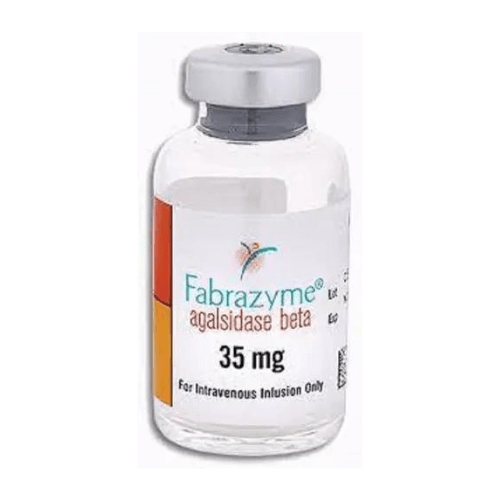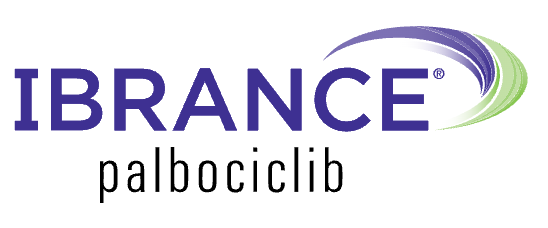
In the Sphere of rare genetic disorders, Fabry disease poses a significant challenge due to an inherited deficiency of the enzyme alpha-galactosidase A. This enzyme is vital for breaking down the fatty substance globotriaosylceramide (GL-3) in the body’s cells. Insufficient alpha-galactosidase A leads to GL-3 accumulation, causing symptoms like kidney disease, heart problems, and neurological issues.
Treatment options were historically limited, leaving patients in uncertainty. However, the introduction of Fabrazyme (agalsidase beta) offers hope, providing transformative therapy by replacing the missing enzyme and alleviating Fabry disease symptoms.
FDA Approval and a New Era in Fabry Disease Management
In 2001, Fabrazyme received FDA orphan drug designation and approval for treating Fabry disease in adults, marking a milestone as the first enzyme replacement therapy (ERT) option.
Manufacturing Details:
Fabrazyme, manufactured by Genzyme Corporation, is a recombinant human enzyme produced through genetically modified Chinese hamster ovary (CHO) cells. The process involves culturing CHO cells, introducing the alpha-galactosidase A gene, and purifying the enzyme for intravenous administration.
Indication
Fabrazyme is an enzyme with hydrolytic lysosomal neutral glycosphingolipid specificity, prescribed for the treatment of confirmed Fabry disease in adult and pediatric patients aged 2 years and older. Fabrazyme works by replacing the missing alpha-galactosidase A enzyme, enabling the breakdown of GL-3.
Condition Information
Fabry disease is a rare genetic disorder characterized by the body’s inability to produce an enzyme called alpha-galactosidase A (α-Gal A). This enzyme is essential for breaking down a type of fat called globotriaosylceramide (Gb3) in cells. Without sufficient α-Gal A, Gb3 accumulates in various organs and tissues, leading to a range of health issues.
Symptoms
The symptoms of Fabry disease can vary widely among individuals, but they often include:
- Burning pain in the hands and feet.
- Small, dark red spots (angiokeratomas) on the skin.
- Nausea, abdominal pain, and diarrhea.
- Reduced ability to sweat, leading to heat intolerance.
- Corneal opacities and other eye issues.
- Progressive kidney damage.
- Increased risk of heart attack, stroke, and other cardiovascular issues.
- Central and peripheral nervous system complications affecting coordination and balance.
Varying symptom severity in Fabry disease highlights the importance of early diagnosis and effective management for optimal outcomes.
Mechanism of Action:
Fabrazyme is administered intravenously, allowing the enzyme to enter cells throughout the body. Then, Fabrazyme binds to GL-3 and breaks it down into smaller molecules that can be easily excreted by the kidneys. This breakdown of GL-3 prevents its accumulation and helps to restore cellular function.
Addressing Potential Concerns
While Fabrazyme has demonstrated remarkable efficacy and safety in clinical trials and real-world settings, certain warnings and precautions should be considered to ensure optimal use and patient safety.
- Hypersensitivity Reactions: Individuals with a history of hypersensitivity to Fabrazyme or its components should not receive this medication.
- Infusion Reactions: Patients may encounter infusion-related reactions. Pre-treatment with antipyretic and antihistamine medications is advised. Adjustments to the Fabrazyme infusion rate or temporary cessation may be required in case of a reaction. Additional medications like antipyretics, antihistamines, and/or steroids can be administered as necessary. Severe reactions may necessitate immediate discontinuation of the infusion, with prompt initiation of anaphylaxis treatment. Patients should promptly report any reaction signs to their healthcare provider.
- Kidney and Liver Impairment: Fabrazyme should be used with caution in patients with kidney or liver impairment. Close monitoring of kidney and liver function is recommended during treatment.
Usage in Specific Populations:
Fabrazyme has demonstrated safety and efficacy in various patient populations, including:
- Pregnancy: The use of Fabrazyme injection during pregnancy should be avoided unless deemed absolutely necessary. Insufficient data is available regarding the use of agalsidase beta in pregnant women. Animal studies have not shown direct or indirect adverse effects on embryonic/fetal development.
- Breast-feeding: Agalsidase may be present in breast milk. As the impact on neonates exposed to agalsidase through breast milk is unknown, discontinuing breast-feeding is recommended during the use of Fabrazyme.
- Fertility: No studies have been conducted to evaluate the potential impact of Fabrazyme on fertility.
- Pediatric Population: Fabrazyme is approved for the treatment of Fabry disease in patients of all ages, including infants.
- Geriatric Population: Studies on Fabrazyme did not involve an adequate number of participants aged 65 years and older to ascertain potential differences in response compared to younger subjects.
Recent Advanced Research on Fabrazyme: Expanding Therapeutic Horizons
Ongoing research continues to explore the potential applications of Fabrazyme beyond Fabry disease. Some promising areas of investigation include:
Angioedema: Fabrazyme is being studied as a potential treatment for hereditary angioedema, a rare genetic disorder characterized by recurrent episodes of swelling in various tissues.
Post-Myocardial Infarction (PMI) Remodeling: Fabrazyme is also being investigated as a potential treatment for PMI remodeling, the process of heart remodeling that occurs after a heart attack.
Side Effects: Understanding Potential Adverse Reactions
The most common side effects associated with Fabrazyme include:
- Infusion reactions (fever, chills, nausea, rash)
- Headache
- Dizziness
- Muscle pain
- Upper respiratory tract infection
- Chills
- Pyrexia
- Cough
- Paresthesia
- Fatigue
- Peripheral edema
- Rash
These side effects are usually mild and go away on their own. However, it is important to inform your healthcare provider if you experience any side effects that are bothersome or do not improve over time.
Patient Assistance and Fabrazyme price Information
Buying Fabrazyme online has been simplified for individuals in the US and Europe. To access this medication exclusive to these regions, you can reach out to the SANSFRO team or other experienced firms specializing in importing medicines. For precise pricing details on Fabrazyme injection in the Indian market, connect with our dedicated Patient Support Team at (+91) 9315705373 or email help@sansfro.com, ensuring accurate and current cost details.
Conclusion
Fabrazyme is a cornerstone in Fabry disease management, providing a safe and effective therapy that replaces the missing enzyme and relieves debilitating symptoms. Its proven efficacy and safety have established it as a global standard of care for Fabry disease. Ongoing research further explores Fabrazyme’s potential applications, solidifying its status as a symbol of hope for patients.
Reference:



